Creating a collaborative question setting web tool
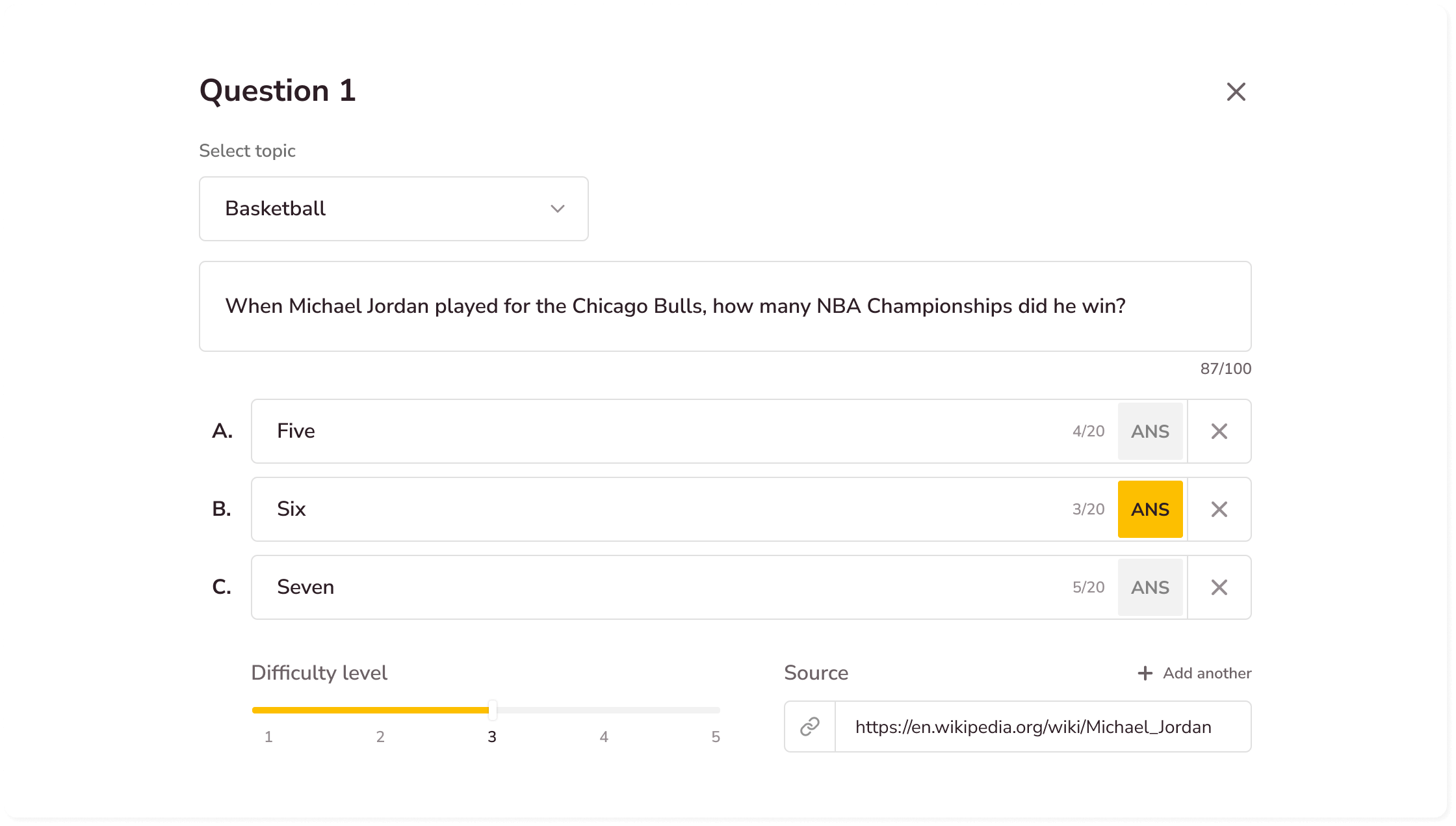
Introduction
Onbimi, a Yoruba phrase that translates to “they’re asking me”, is a proprietary collaborative question-setting and project management web tool for game show producers, teachers, and examination bodies. Onbimi will help writers, editors and verifiers collaborate on the go, and help project handlers track relevant project data.
Onbimi
Client
The Quiz Company
Industry
Media, Games
Platforms
iOS, Android
Expertise
Conceptualisation, UX Design, UI Design, User Testing
My role
As a co-founder of a contest creation company and lead designer on this project, I studied the writing team’s processes and outputs as well as the writing processes of shows such as Who Wants to be a Millionaire.
I also called on my familiarity with project management products to optimize and streamline both the writing and management workflow for efficiency, ease of use and universal application. Ultimately, I designed a highly configurable web tool.
The goal
The central goal of Onbimi is to help contest creators or organisations that need questions populate a question repository with high-quality questions written to spec and on time.
The Origin Story
Upon discovering that word processors and spreadsheet tools are ill-suited to question-setting projects such as a quiz tournament product I was working on, we made a decision to create an internal tool to solve the specific problem of populating our question bank with high-quality questions written to spec.
From a little asking-around, we also found that many examination bodies in Nigeria still use pen, paper and transport to get questions ready from draft to completion and rely on crude methods to track writing data. The more technologically advanced use inadequate tools like email, Microsoft Word, and at the top of the line, Excel or Google Sheets.
User Research
I conducted interviews with the questions lead and the rest of the writing team to gain insights into their processes, outcomes, specific needs and pain points.
I learnt that the management and writing process were far from ideal but dictated by the tools available to the team. Some tools had been rejected in favour of others and I wanted to understand.
- Rejected
- Notion
- Microsoft Excel
- Microsoft Word
- Accepted
- Google Forms
- Google Sheets
The old process: Topic selection
The project leads creates topics for the writers using Google Forms and the writers chose the topics they want to write on.
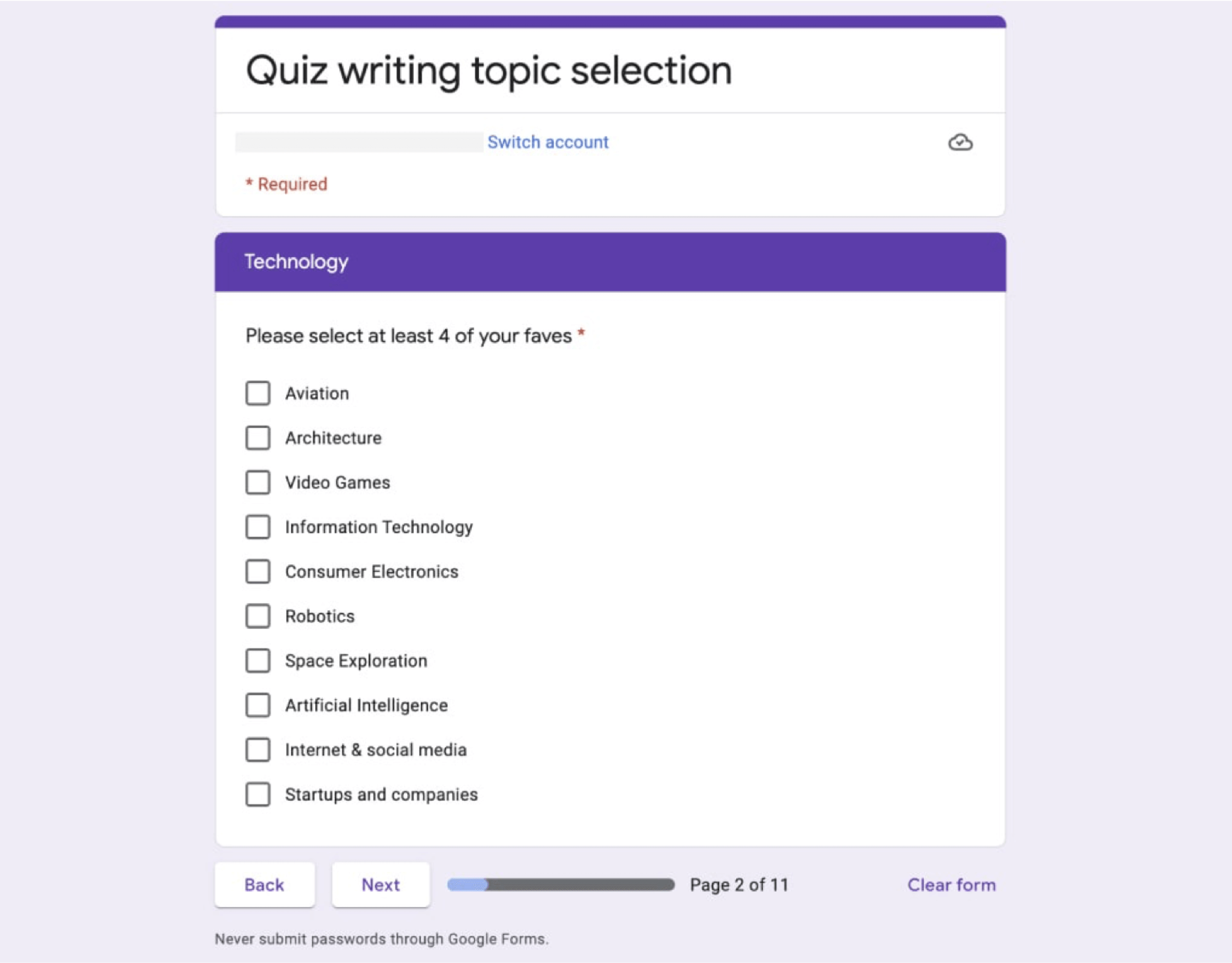
The old process: Editing questions
Editors edit written questions on the Google Sheet document. Rejected questions are highlighted with red.
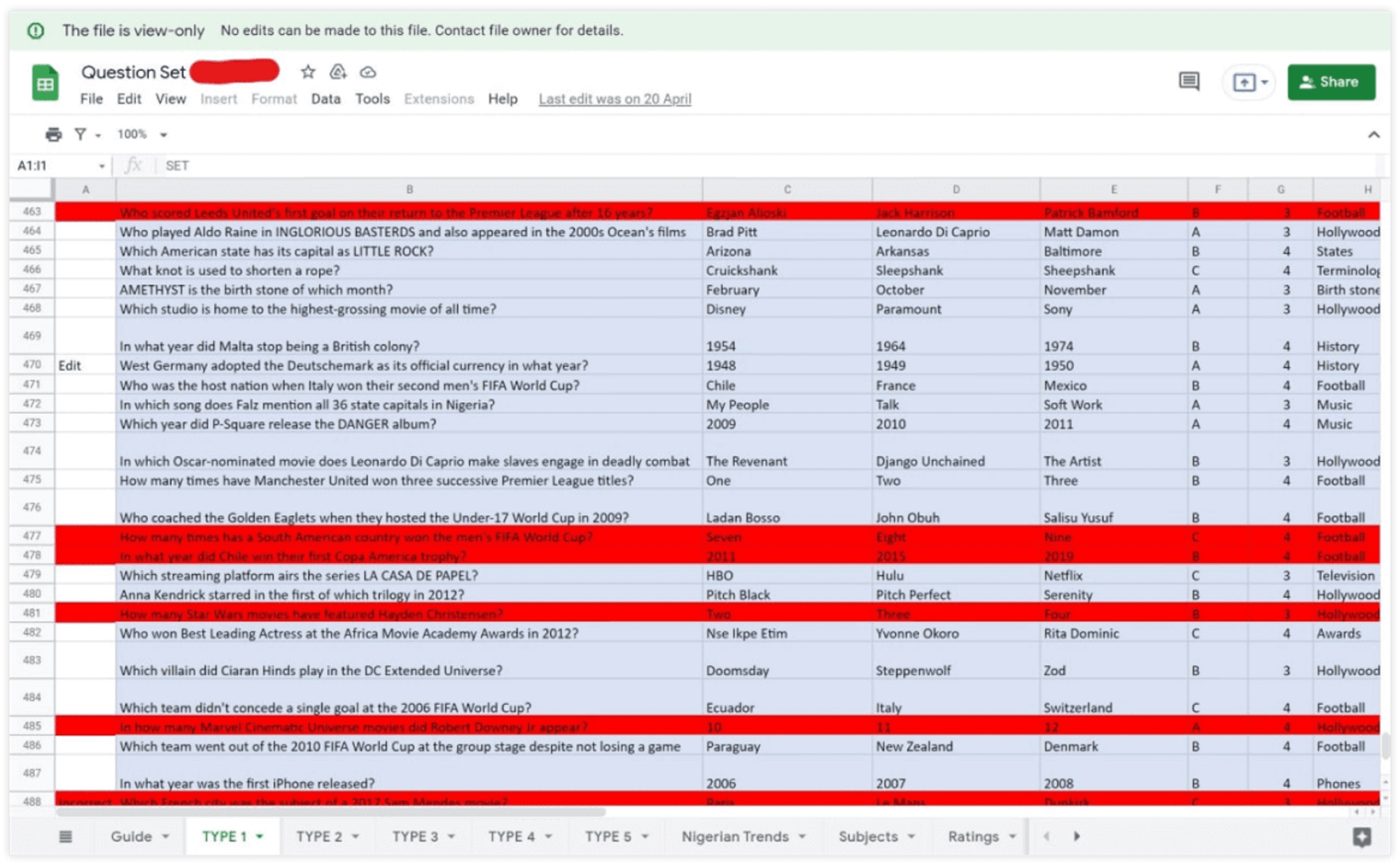
The inadequacies with the old process
After thoroughly examining the old process and from feedback gotten from everyone I interviewed, I came up with a list of inadequacies I found with the old process.
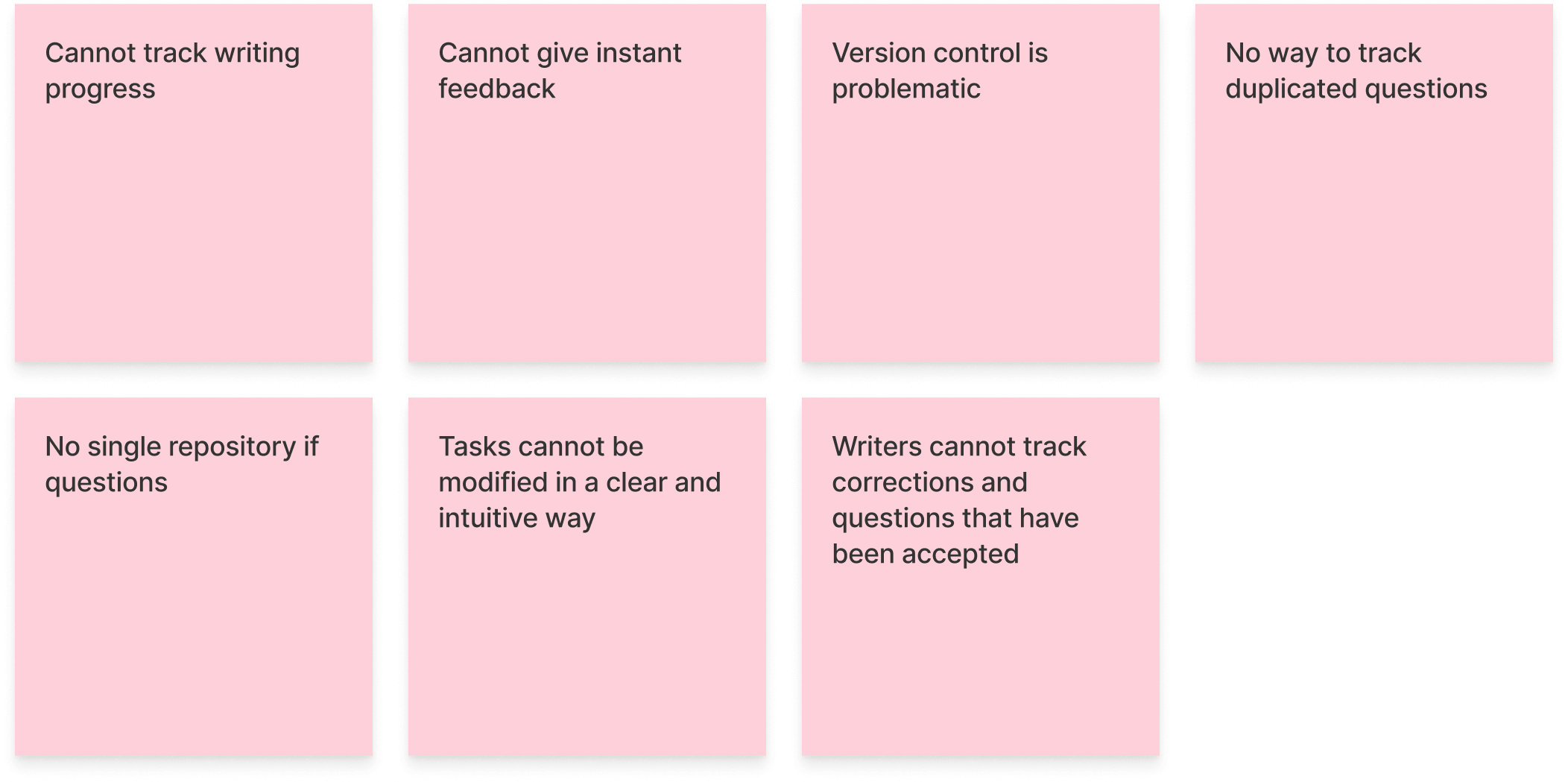
Setting up rules
Questions that will be used in quiz shows, products or examinations are sensitive. The process of their production must inspire integrity and must maintain absolute compartmentalization between roles.
For efficient project management, the admin must have the ability to configure and communicate expectations, have complete oversight into project activity, and take remedial action where necessary.
Here, the admin populates a database of subjects and topics, and can add new ones on an ongoing basis. Writers will then choose their preferred topics. However, once a topic has been selected a specified number of times, that topic automatically becomes unavailable. This solves the problem of having too many questions on few topics. This automation can be overridden if need be.
The admin also establishes question types, assigns question quotas for the writing process, sets duration of the project and sets much-needed restrictions like character limits.




Establishing quotas for writers and editors
Quotas can refer to the number of question writers/editors are contracted to produce or the amount of questions under each question type. Admins can add writers and editors, assign different writing projects to writers and follow their progress in detail. They can edit the number of questions assigned to each writer as well as quotas for each question type.


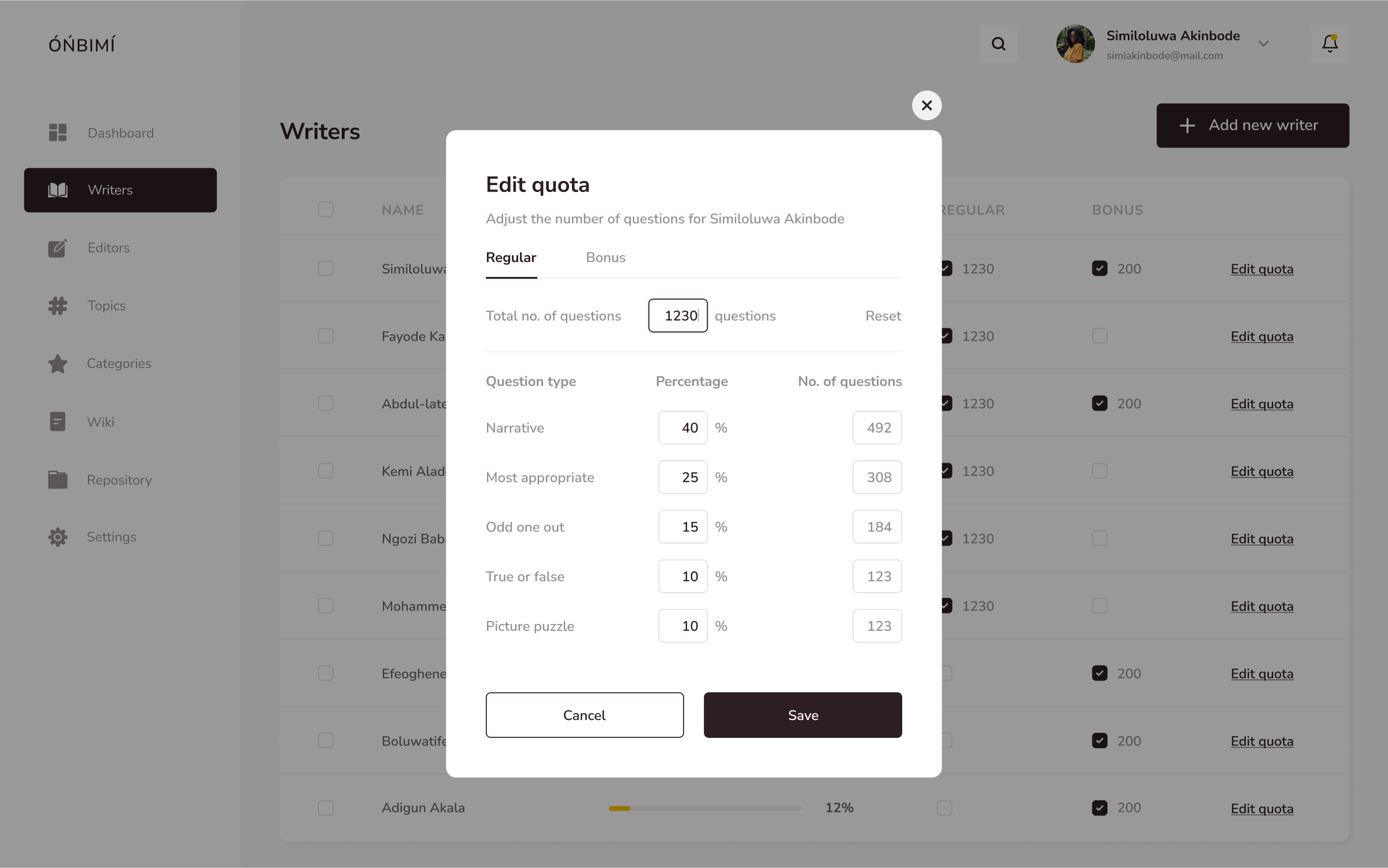
Writing questions
Writers have an intuitive interface to write questions, write options, upload media for media-based questions, select answers, set difficulty, and ascribe a source. Crucially, admins can set character restrictions on text fields to ensure a perfect fit between question & option length whatever interfaces they are being deployed too. Think about all the times you’ve seen overly long text squeezed into the questions graphic on a quiz show.
To avoid duplicating questions, writers can also query the question bank with keywords to see associated questions. This feature is useful for editors who will delete duplicates based on timestamps.
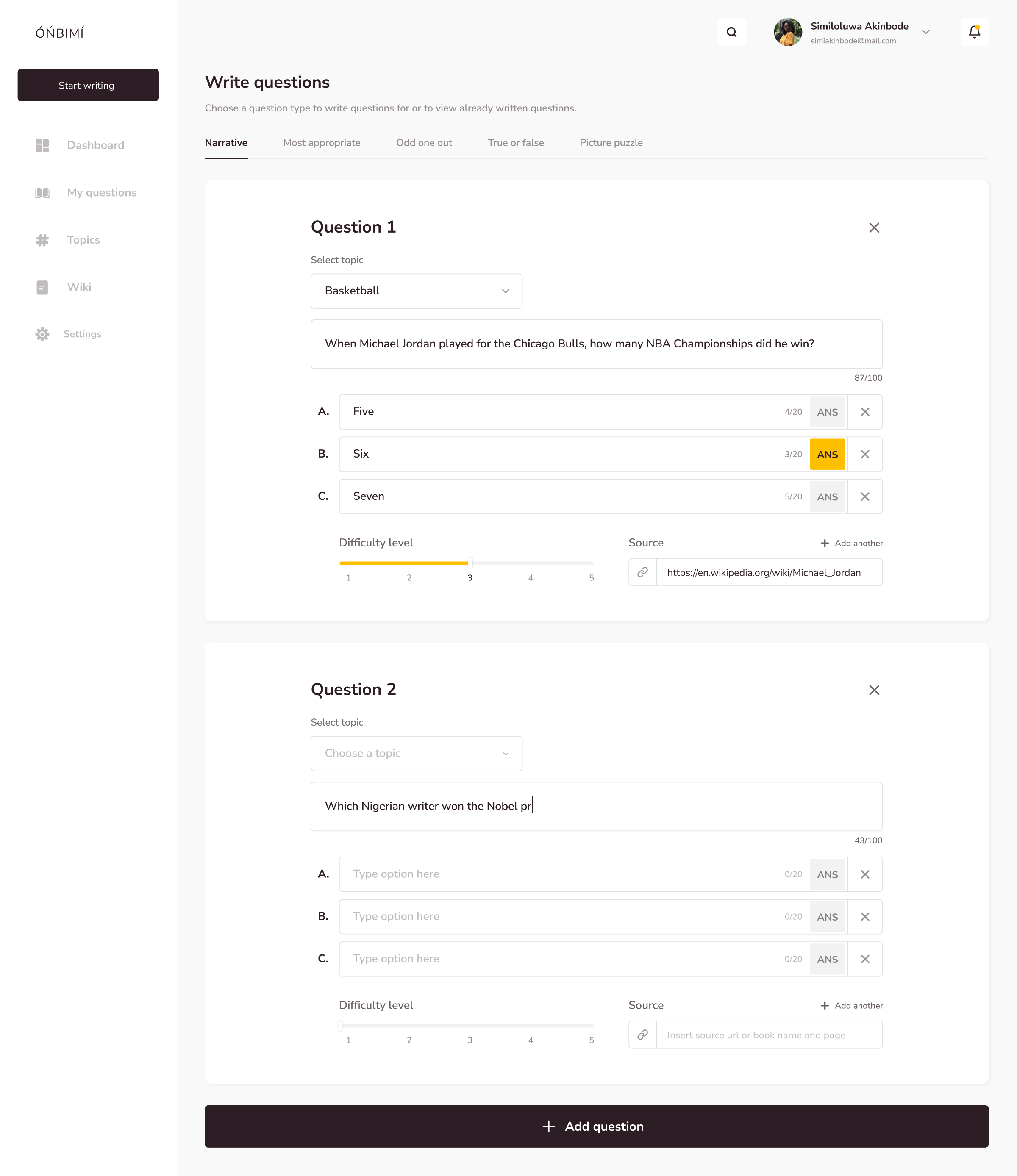
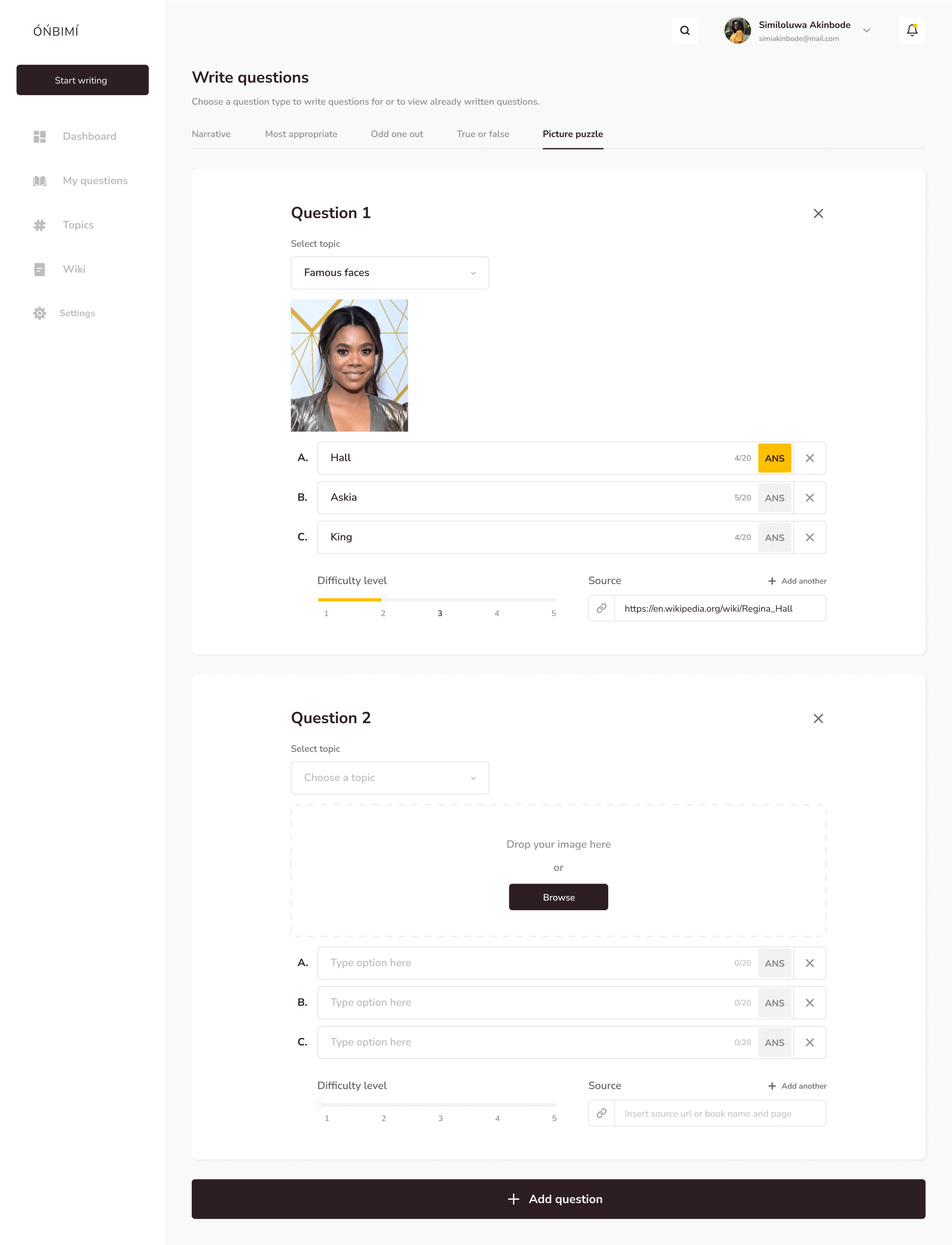

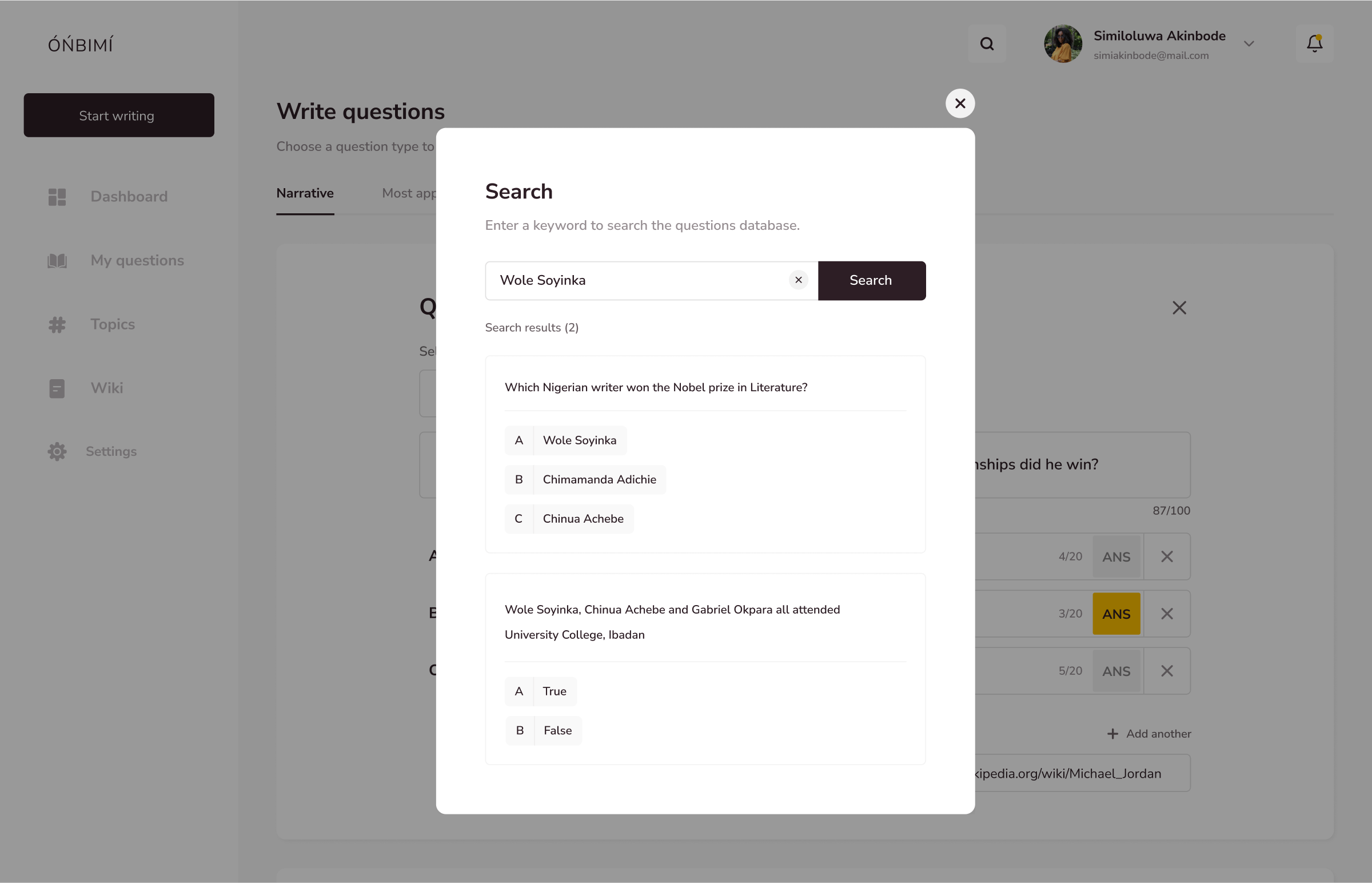
Receiving feedback
After questions are edited, writers receive instant notifications of activities like acceptance and rejection of questions. They can see the edit status of their questions and take necessary action.
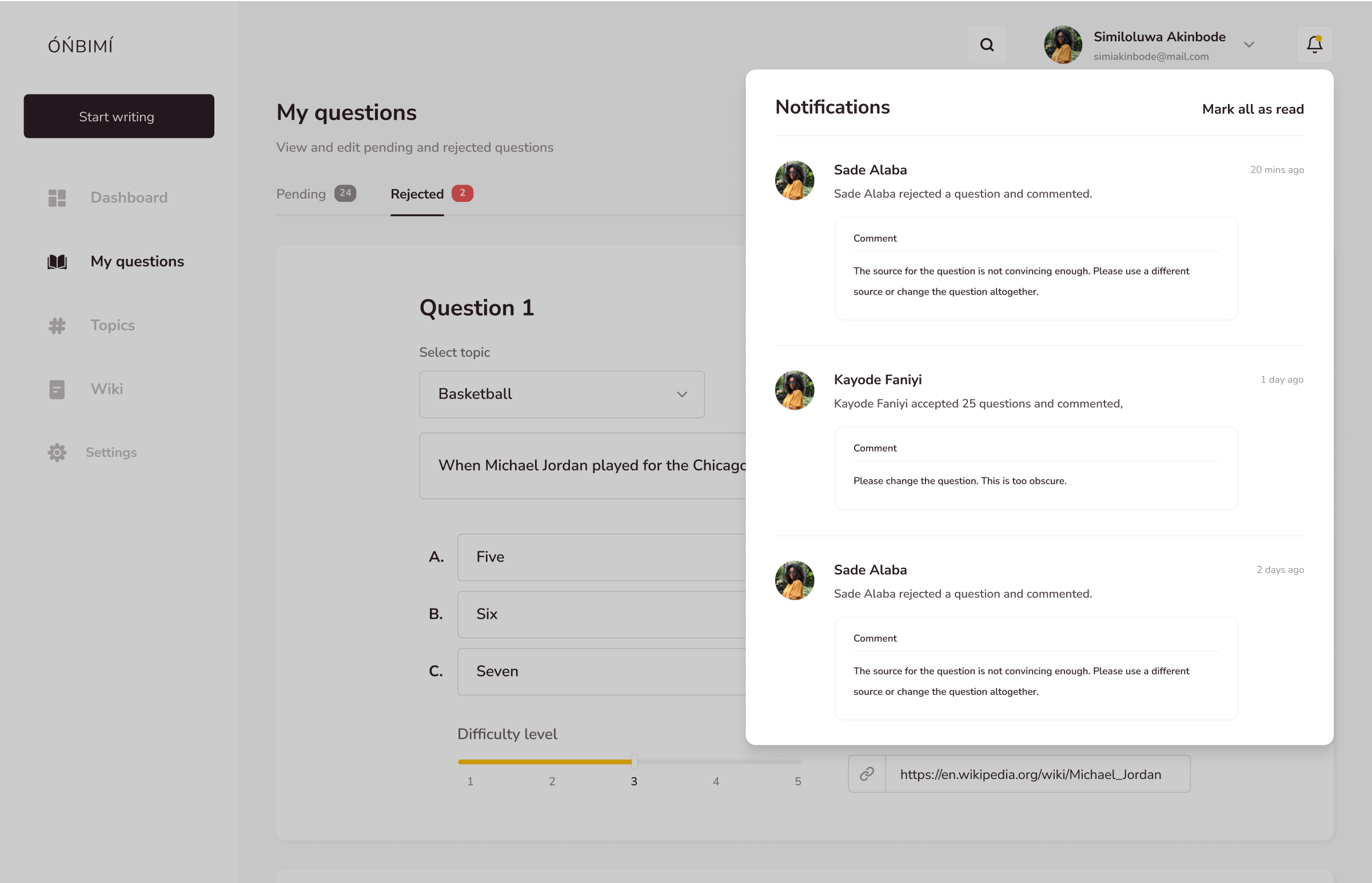
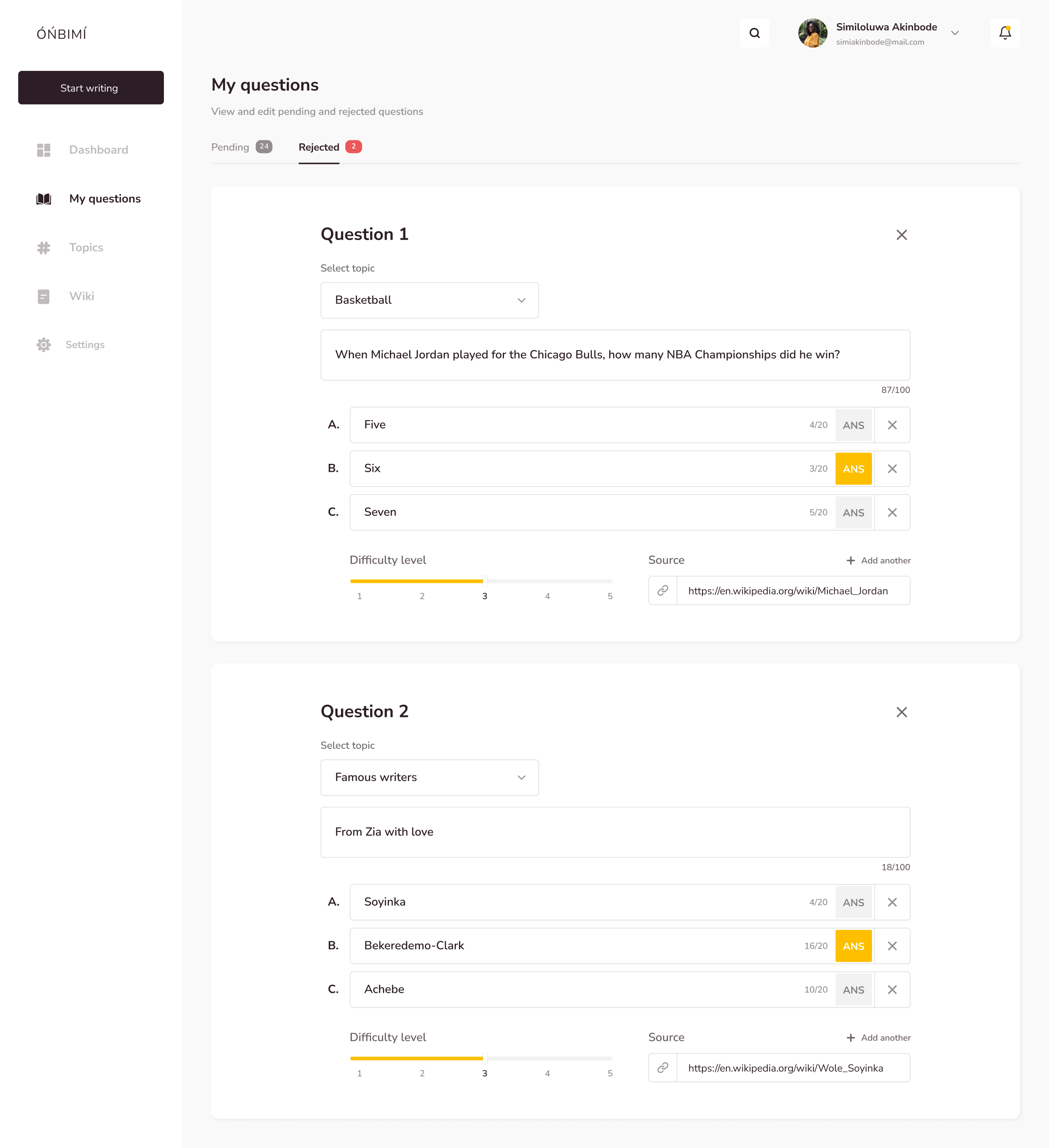
Keeping an eye on things
Writers also get a detailed breakdown of their writing progress. The admin gets a quick snapshot of writing progress to easily pinpoint where intervention may be necessary.

The devil is in the details
I am generally intrigued by unusual challenges, and I enjoyed working on Onbimi mainly for this reason. Was it necessary to create it? Absolutely. A company that creates many quiz products will be needing a lot of questions in its lifetime. That’s an important detail that justifies the outcome.
For an unusual challenge where there are few to no templates, the importance of paying attention became more emphasized for me. Paying attention to the needs and processes of stakeholders, then translating the insights garnered was crucial.
Finally, working on this project has made me realize that intuition is an important tool for design. While this may seem counterintuitive in a practice that benefits greatly from research, I now believe that instinct is usually the output of data fed to the unconscious mind.
NEXT PROJECT
